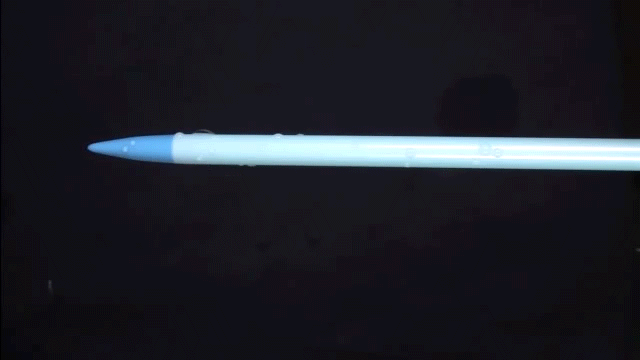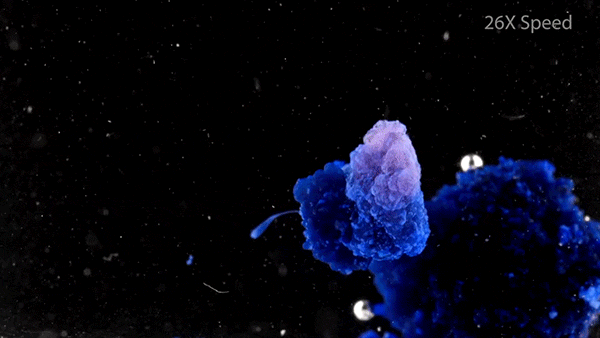29 June 2015
Since humanity made its first trip out of Earth’s atmosphere, we’ve been polluting the emptiness surrounding our planet. Orbital debris is a significant concern for all space-faring countries and could seriously impact the future of spaceflight. Because objects in Low-Earth Orbit are moving at a brisk 7km/s (15,000mph) the risk for catastrophic collision, especially with manned spacecraft, is a nontrivial issue.
This simulation illustrates some of the debris orbiting the planet (not to scale) that our spacecraft must navigate through when exiting the atmosphere. NASA and other government agencies track approximately 19,000 pieces of debris larger than 5cm with an estimate 300,000 pieces larger than 1cm existing below 2,000km. Numerous debris-removal missions are currently being planned to clean up low Earth orbits.
It is important to remember that the objects depicted in the animation are not to scale. At this scale, much of the debris would require an electron microscope to visualize.
Source: https://youtu.be/pkfKnxX-L0k
#ScienceGIF #Science #GIF #Space #NASA #Earth #Orbit #SpaceJunk #Debris #Hazard #Simulation #Satellite
View Original Post on Google+
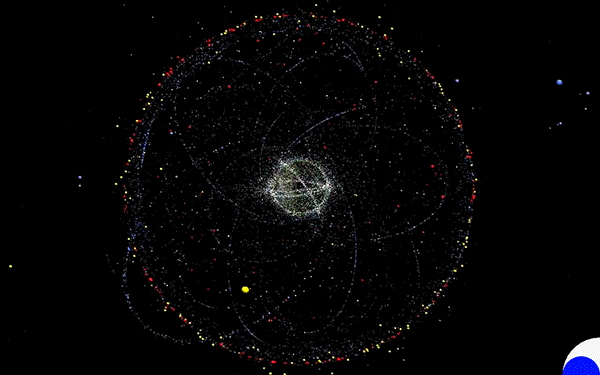
28 June 2015
SpaceX CRS-7 exploded after launch today on its way to the International Space Station for a cargo resupply mission. The Falcon 9 rocket exploded 2:19 after launch shortly after going supersonic at an altitude of 44km (27 miles). It was the first failure of the Falcon 9 rocket type after 19 successful launches with debris falling into the Atlantic Ocean. The payload included a docking adapter for the ISS to convert an existing docking interface into the new NASA Docking System for future US human-transport spacecraft.
Source: https://youtu.be/PuNymhcTtSQ
#ScienceGIF #Science #GIF #SpaceX #Falcon9 #Rocket #Launch #Explosion #NASA #ISS #Failure #Space #Exploration
View Original Post on Google+
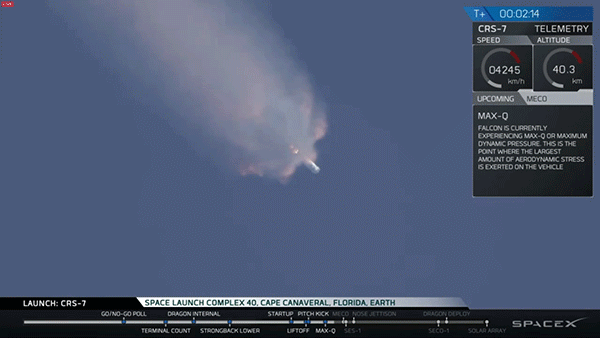
26 June 2015
The aurora borealis (northern lights) are caused by charged particles from the Sun interacting with the upper atmosphere. These solar particles are accelerated by the Earth’s magnetic field towards the geomagnetic poles where they ionize gases in the atmosphere and produce light.
Source: https://vine.co/v/OmQZQAjhOrj (Reid Wiseman)
#ScienceGIF #Science #GIF #Aurora #AuroraBorealis #NothernLights #Space #ISS #NASA #Astronaut #Orbit #Magnetism #Solar #Particles #Physics #Pretty #Lights
View Original Post on Google+
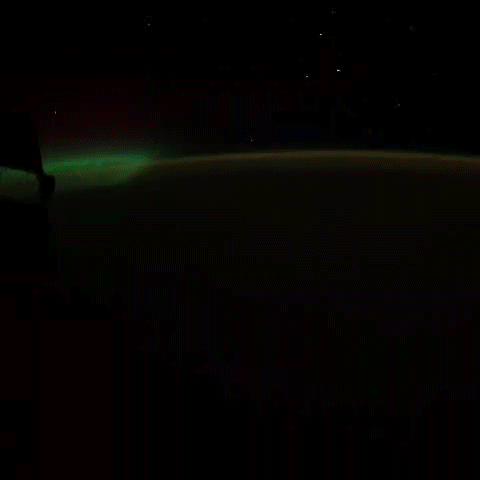
25 June 2015
The surface tension of the water on the metal screen is sufficient to contain the entire jar of water even while inverted. Surface tension is the elastic tendency of liquids that makes them attempt to minimize surface area. Obviously, without the screen present the water would immediately spill.
Source: https://youtu.be/WsksFbFZeeU (Physics Girl)
#ScienceGIF #Science #GIF #Physics #SurfaceTension #Water #Screen
View Original Post on Google+
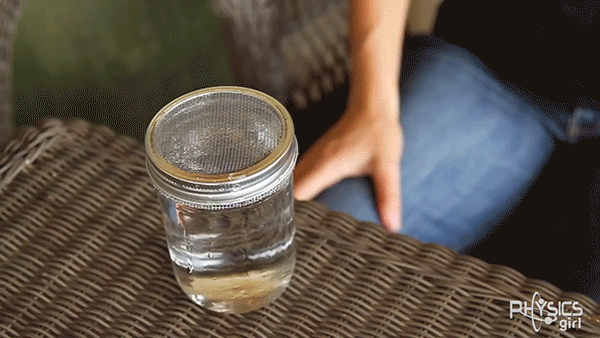
25 June 2015
This timelapse depicts the International Space Station preparing to release the SpaceX Dragon after a supply run to the space station. After undocking from the ISS, the robotic arm is used to maneuver the spacecraft away from the station for re-entry into Earth’s atmosphere.
Source: https://vine.co/v/Oeuz233ODAm (Reid Wiseman)
#ScienceGIF #Science #GIF #NASA #ISS #SpaceX #Dragon #Space #Atmosphere #Timelapse #Arm #Cargo #Payload
View Original Post on Google+

24 June 2015
When dropped individually, these balls fail to reach their initial heights because energy is lost as they impact on the ground. Because of Conservation of Energy , the upwards bouncing ball no longer has the kinetic energy necessary to reach the same height.
However, when stacked on top of each other, the golf ball is sent flying because of Conservation of Momentum (momentum = mass*velocity). Upon impact on the ground, the basketball transferred all its momentum into the blue ball, which in turn transferred all its momentum into the golf ball. Because momentum is related to mass, these larger balls have much more momentum than the golf ball. This means that in order for momentum to be conserved, the upwards velocity of the golf ball is massively increased, sending the golfball flying high.
Source: https://youtu.be/2UHS883_P60
#ScienceGIF #Science #GIF #Physics #Newton #Conservation #ConservationOfEnergy #Momentum #Energy
View Original Post on Google+

23 June 2015
A hydrogel is a network of polymer chains that are hydrophilic (water-loving) and capable of holding a large amount of water. The small pile of hydrogel beads rapidly swells as the water is absorbed. Hydrogels are commonly used in biomedical research, drug delivery, and even disposable diapers.
Source: https://youtu.be/Jafi3w__Svc
#ScienceGIF #Science #GIF #Hydrogel #Absorption #Water #Polymer #Hydrophilic #Gel
View Original Post on Google+
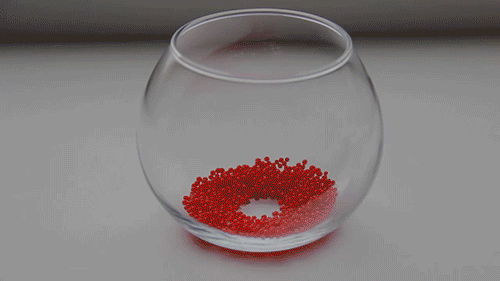
22 June 2015
The eruption of the Mount Tavurvur volcano in Papua New Guinea on August 29, 2014. As the plume of debris explodes skywards, the shockwave from the eruption can be seen blowing away the nearby clouds and hillside.
Source: https://youtu.be/BUREX8aFbMs
#ScienceGIF #Science #GIF #Volcano #Eruption #Water #Clouds #Pressure #Shockwave
View Original Post on Google+
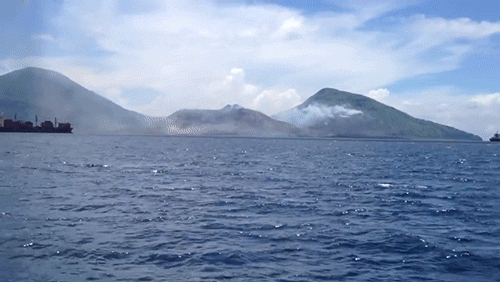
22 June 2015
20 June 2015
Astronauts in the International Space Station used knitting needles and water droplets to demonstrate physics in space. By applying a charge to the needle, the electrical attraction between the needle and water molecules described by Coulomb ‘s Law causes the droplet to orbit around the needle. Since the experiment was conducted in the zero gravity environment of the ISS, there is little effect from gravity on the water molecule’s motion.
Source: https://youtu.be/qHrBhgwq__Q
#ScienceGIF #Science #GIF #Coulomb #Electrical #Charge #Space #ZeroGravity #Gravity #Orbit #Water #Polar #Charged
View Original Post on Google+
